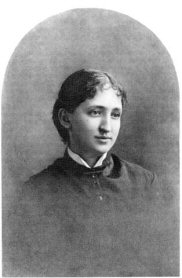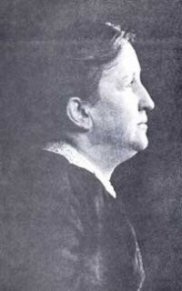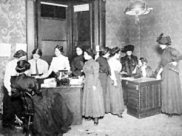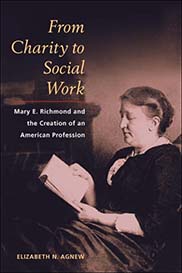





|
Tweet
1917 Mary Ellen Richmond The founding mother of social casework |
With her book Social Diagnosis from 1917, Mary Ellen Richmond (1861-1928) constructed the foundations for the scientific methodology development of professional social work. She searched for the causes of poverty and social exclusion in the interaction between an individual and his or her environment. Mary Richmond can be described as the mother of social casework. Richmond spent her youth in Baltimore on the American east coast. Aged 4, she became an orphan. She was an intelligent young lady and was raised by her feminist grandmother. After having worked for eight years in a bookshop, she dedicated the rest of her life from 1889 onwards to modernising and professionalising of care for the poor. She started her career with the Charity Organisation Society (COS) in Baltimore, a US branch of the organisation Octavia Hill established in the UK. Richmond’s capacities didn’t remain unnoticed and soon she was offered leading position in COS in Baltimore and Philadelphia. From 1909 until her death, she was director of the charity department of the Russell Sage Foundation in New York, an influential fund supporting social science research. In modern social work, about everybody agrees there is a need for diagnosis and research to happen before care provision. It was Richmond who systematically developed the content and methodology of diagnosis in the period around 1910. Her first principle was that care had to focus on the person within her or his situation. Building on extensive research, she developed what she labelled ‘social diagnosis’. Her famous circle diagram visualised the correspondence of client and environment. Richmond identified six sources of power that are available to clients and their social workers: sources within the household, in the person of the client, in the neighbourhood and wider social network, in civil agencies, in private and public agencies. This is a precursor of the system theory that was so popular in 1970’s social work.
Through her approach to research, Richmond gave social work clients a voice for the first time. In this way, she opened a new and fruitful area of social research which is up to now a cornerstone of social work. With her broad instructions on how to gather information, interview methodologies, establishing contact and conducting conversations, Richmond gave social casework a strong professional status.
The work of Mary Richmond was highly influential in the USA, UK and internationally. There are few countries where current social work has not been influenced by her work and thinking.
|
|








